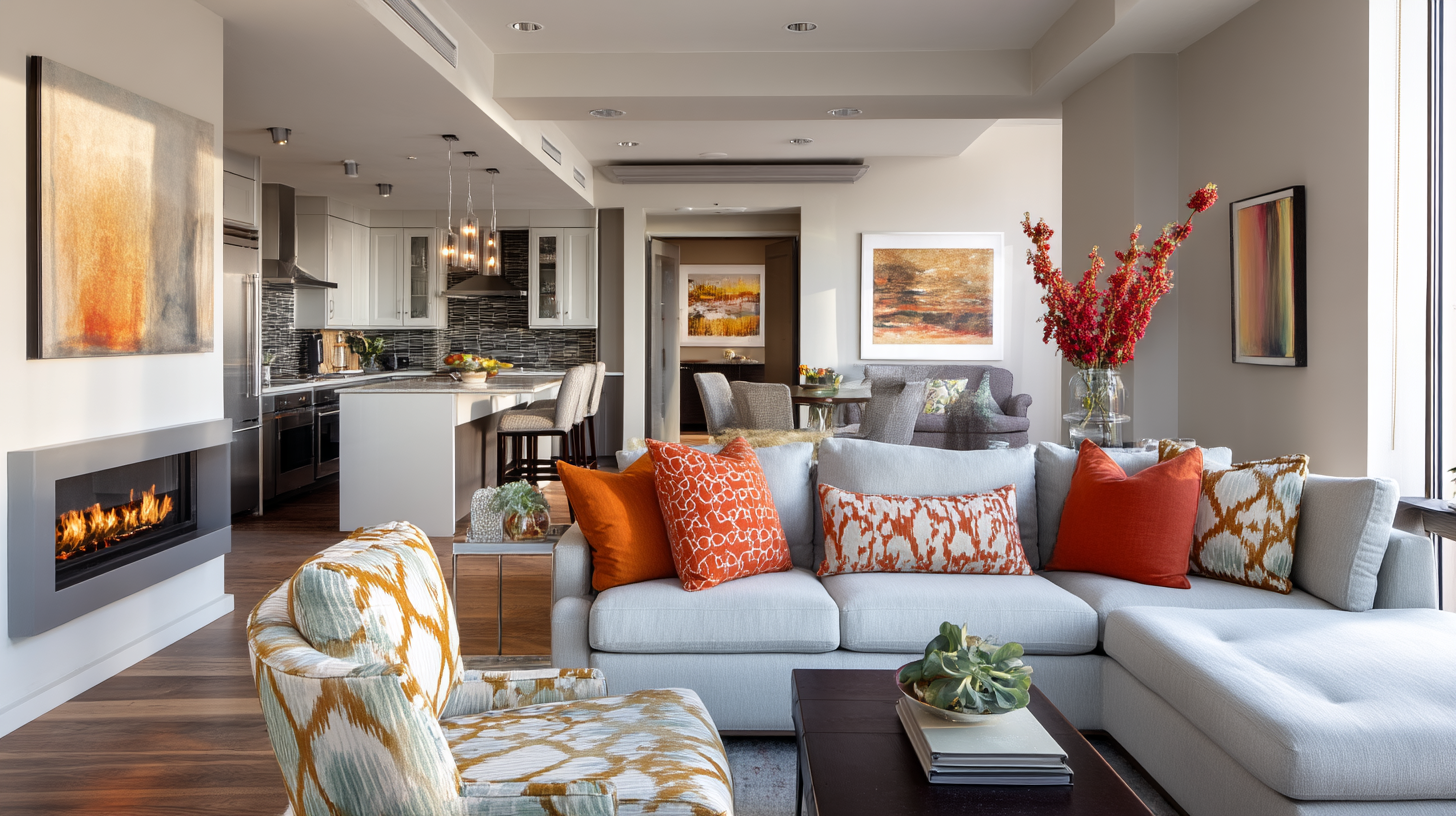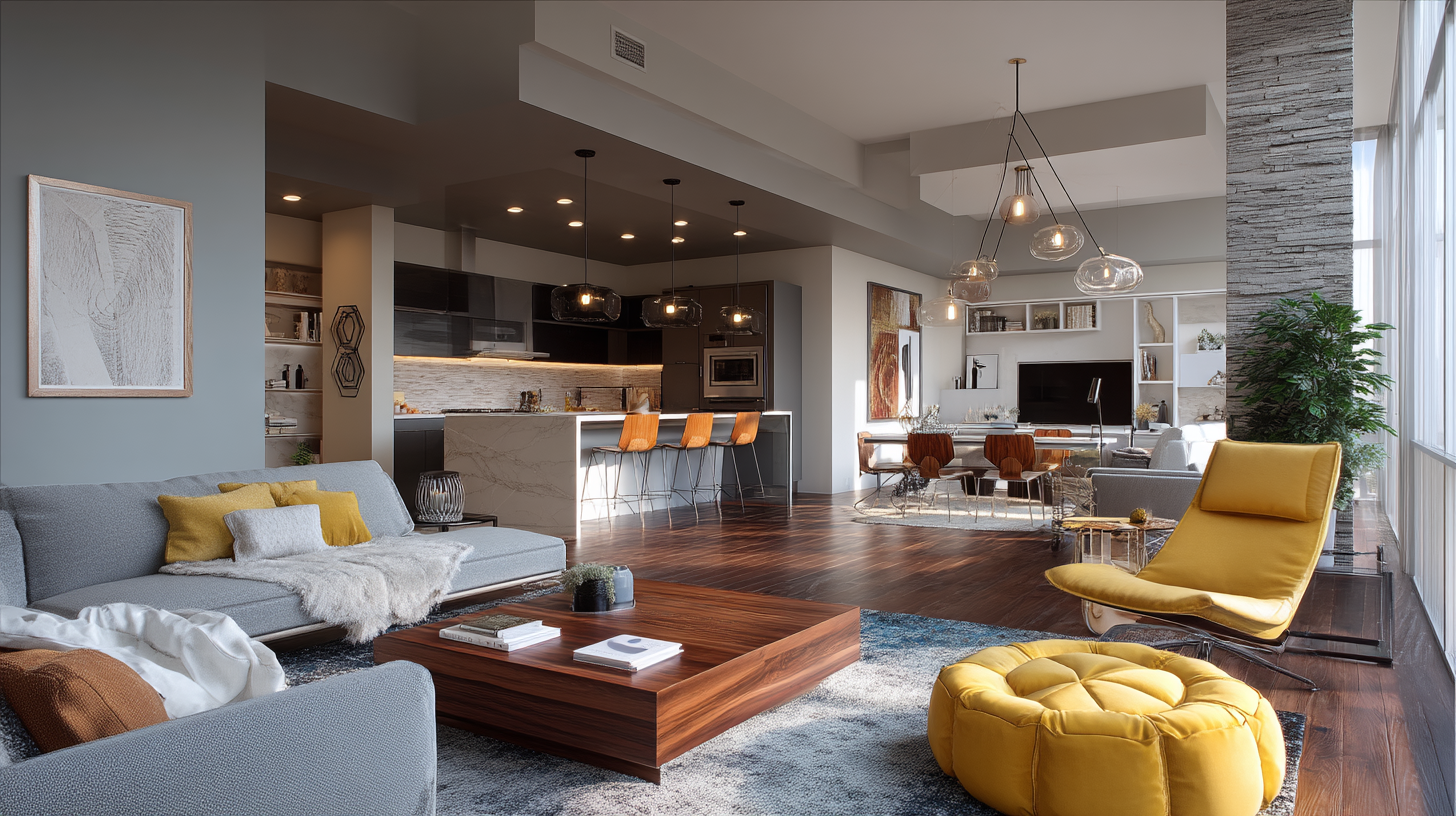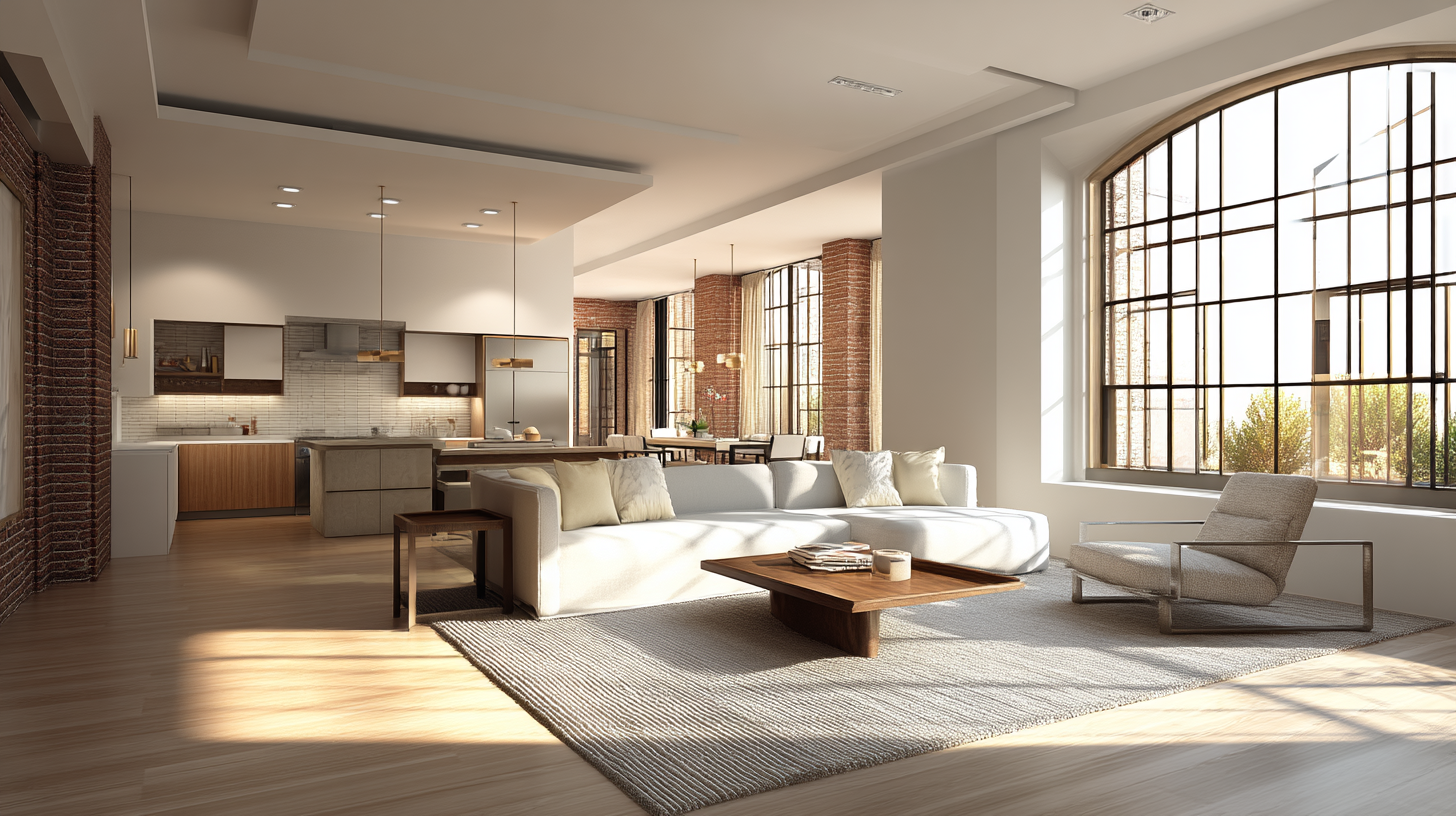Partnered with #1 ADU Builders
Contact Golden State
Drop us a line! We look forward to discussing your next project with you!
Cut the chase! Schedule a face-to-face virtual meeting with us today to dive into your project's next steps.
For our returning clients, experience our streamlined, contact-free project proposal process. Simply fill out our short project questionnaire, and we'll deliver your project proposal within 72 hours.
Contact Us:
Follow Us:

- Golden State Design & Engineering
- Comment 0
Ideas for Home Interior Design in 2025: Style, Substance, and Sustainability
Ideas for home interior design evolve every year, but in 2025 they’re grounded in purpose, balance, and timeless elegance. Whether you lean toward traditional interior design style, Scandinavian interior design style, or wish to explore unique interior design styles, the following insights will help you bring your dream home decor to life. In this guide we cover interior design style fundamentals, neutral color palette strategies, natural materials, and how an interior designer can guide your path. We also share ideas tied to rustic cabin charm, sleek modern vibes, classic traditional accents, and more.
Understanding Interior Design Style: From Traditional to Contemporary
When we talk about interior design style, what do we mean? Your style is the visual and emotional identity of your rooms, pulling together materials, furniture, color palette, patterns, textures, and lighting into a coherent whole. Exploring different aesthetics allows you to create a sophisticated and personalized environment that truly reflects your taste.
Traditional Interior Design Style: Key Features and Legacy
A traditional interior design style embraces history, symmetry, ornamentation, and refined proportions. It often uses classic furniture, antiques, rich wood, patterned rugs, columns, crown moldings, elegant light fixtures, and decorative art. Traditional style gives a sense of grounding and continuity, and it pairs beautifully with a neutral color palette if accented with period‑appropriate color or gold detail. For homeowners who value legacy and formality, traditional style offers timeless elegance and visual interest that endures.
Scandinavian Interior Design Style: Simplicity and Warmth
Scandinavian interior design style emphasizes minimalism, light, clean lines, natural materials, and cozy textures. Think pale woods, white or off‑white walls, cozy textiles like wool or sheepskin, and furniture with simple silhouettes. The Scandinavian aesthetic proves that you can achieve warmth and comfort without clutter, and many interior designers combine Scandinavian principles with other aesthetics to balance minimalism and soul.
Blending Styles and Unique Interior Design Styles
You don’t have to commit to one aesthetic. Many modern homes mix elements of traditional and Scandinavian, or introduce unique interior design styles such as Japandi, boho minimalism, or modern rustic. The key is balance, select a core style, then layer secondary elements that reflect your personality. That mix gives each room visual interest and ensures your home feels curated, not chaotic.
Core Elements and Key Elements of Interior Design You Must Prioritize

When planning any design projects, these elements are nonnegotiable. They are core to how a space looks and functions.
Natural Materials and Sustainable Choices
Natural materials such as wood, stone, woven fibers, leather, rattan, and linen bring texture, warmth, and longevity to your home decor. In 2025 designers continue to lean toward material drenching, using one dominant material (for instance plaster, wood, or stone) across walls, floors, built‑in cabinets, or ceilings to create unity and immersive aesthetic impact. Natural materials also support sustainability, one of the most important priorities for modern homeowners.
Neutral Color Palette with Strategic Accent Colors
A neutral color palette forms a reliable foundation. Tones such as cream, soft gray, beige, taupe, and muted greens or browns allow flexibility. Once you have your neutrals in place, you can add contrast and personality via accent colors, deep blues, terracotta, emerald green, or wine tones. The neutral base keeps the overall aesthetic calm, while color accents bring mood and energy.
Texture, Pattern, and Visual Interest
To avoid flatness, layer textures and patterns. Fluted wood panels, woven wallcoverings, boucle upholstery, linen draperies, textured stone tile, and wallpaper with subtle motifs all create depth. The interplay of materials keeps your eye engaged and contributes to visual interest. Patterns should be used sparingly, one or two per room is often enough.
Light, Lines, and Functionality
Natural light is a must. Rooms oriented for optimal daylight, well‑designed window placements, and transparent or translucent materials enhance spatial quality. Architectural lines, straight, curved, or transitional, help define zones while preserving flow. And functionality must never be an afterthought. Storage, circulation, and the relationship between furniture and walls or floors should be part of the plan from day one.
Craftsmanship, Art, and Antiques
Incorporating handcrafted furniture or antiques adds character, history, and soul. A vintage sideboard, a handwoven textile, or a wood sculpture can contrast beautifully with sleek modern surfaces. Good interior designers often find or commission pieces that become focal points and conversation starters.
Room‑By‑Room: Interior Design Ideas for Each Space

Below we give inspiration and direction for rooms throughout your home, from living and dining to bedroom and bathrooms. Use these as springboards for your dream design.
Living Room: The Heart of Home Decor
Start with the foundational furniture, the sofa, occasional chairs, focal coffee table. In a modern living room, favor sculpturesque forms, rounded edges, or a blend of modern and traditional carpentry. Use a neutral wall color to support a flexible color palette. Add texture with rugs, woven throws, pillows, and layered lighting.
If your home allows, open the space to the outdoors with large sliding doors or folding glass walls. That connects your interior design projects to exterior landscaping seamlessly. Add a gallery wall or curated art collection to bring personality. Built‑in shelving or a wall of cabinetry disguised in your finish material can offer storage without visual clutter.
Kitchen & Dining: Balance of Beauty and Utility
Kitchens in 2025 are more than utilitarian, they are design statements. Use continuous materials (like stone slabs that run from countertop to wall) for visual cohesion. Avoid busy tile once tile is segmented; instead opt for large stone slabs, minimal grout, or integrated backsplashes. Hidden storage, integrated appliances, and paneling keep the space sleek.
For dining, a round or oval table softens the rigid lines of cabinetry. Select chairs with subtle curves or slim profiles. In a Scandinavian or contemporary hybrid, use light wood tones, rattan detailing, and minimalist lines. In a traditional twist, perhaps use turned legs or carved details in a hybrid aesthetic.
Bedrooms: Serenity and Texture
The bedroom should feel calm, cozy, and refined. Use a neutral color palette on walls and floors, then layer textures, velvet pillows, woven throws, linen draperies, or wool rugs. Position the bed to maximize natural light and views. Nightstands with hidden storage, built-in lighting, and architectural headboards (perhaps wood or plaster) reinforce elegance.
Introduce a reading nook or a small desk built into a wall niche. Use curved forms to soften corners. A rustic cabin vibe can be blended here with reclaimed wood accent walls or exposed beams, provided you balance with sleek modern textiles and soft neutrals to avoid heaviness.
Bathrooms: Spa Feel Meets Practical Design
Bathrooms in 2025 lean toward spa‑inspired simplicity. Choose stone or porcelain that mimics stone, natural plaster walls, and minimal metal trim. Use continuous slabs or drench the material over the wall to floor transitions. Glass wet zones, skylights, and natural ventilation bring in light and freshness.
Fixtures in brushed metals (brass, aged nickel) add warmth. Use textured tile floors or underfloor heating under natural stone. Floating vanities, recessed niches, and hidden storage are preferred for sleek minimalism without sacrificing utility.
Design Projects and Integration Across Disciplines
When working on design projects for a house or multifamily building, the collaboration is vital. Interior design is not isolated from structure, architecture, civil, or permitting. Curved walls, built-ins that cut through load bearing walls, niches, light wells, or windows all require engineering input. That is why integrating interior design goals with architectural and structural planning from the start is a must-have to ensure your aesthetic ambition does not conflict with functionality or code.
Inspiration should inform the early phases, selecting your core interior design style, neutral palette, materials, and key elements before plans are finalized. That helps avoid costly changes or delays later.
How to Achieve Timeless Elegance (Not Just Trendy Style)

Even as trends shift, with contemporary, eclectic, or modern movements rising, you want your home to feel relevant in 10 or 20 years. Timeless elegance comes from restraint and quality:
- Choose a neutral color palette as your core.
- Use durable, natural materials instead of fast fashion decor.
- Prioritize craftsmanship over mass manufacturing.
- Integrate structural elements into your design so form and function align.
- Let unique interior design styles or trendy accents appear as accessories, not the core.
- Be disciplined with patterns and contrast.
- Invest in good lighting, proportions, and spatial flow.
These principles ensure your design remains compelling even as tastes evolve.
Mixing Aesthetics: Rustic Cabin, Sleek Contemporary, Classic Touches
One powerful approach is to combine contrasting but complementary aesthetics:
You might bring a rustic cabin texture, exposed beams, reclaimed wood walls or ceilings, into a modern framework of neutral walls and sleek furniture. Use leather accent chairs, rattan elements, or woven baskets as bridging items. Let one room or focal wall lean rustic, while surrounding rooms lean modern minimalism, and the transitions remain soft.
Another example is blending traditional motifs (such as columns, molding, classic furniture silhouettes) into a modern spatial layout with clean lines and glass walls. The mix feels rich, curated, and expressive of your identity.
Role of an Interior Designer in Your Project

A professional interior designer is vital if you want cohesion, efficiency, and clarity. Their expertise includes:
• Translating your vision and mood into a complete design
• Selecting materials, finishes, furniture, textiles, lighting, and color palette
• Coordinating with architects, structural engineers, and civil planners
• Creating detailed drawings, finish schedules, and specifications
• Overseeing installation and quality control
Good interior designers can help you avoid pitfalls, overmixing styles, misplacing lighting, ignoring structural constraints, or investing in decor that lacks durability or resale appeal.
Frequently Asked Questions About Interior Design
What are the most popular interior design styles in 2025?
In 2025, material drenching, soft curves, rich texture, and rooted palettes dominate. Designers blend styles, transitional, Japandi, modern rustic, curated traditional, to create spaces that feel personal yet refined.
How do I choose the right natural materials for my space?
Start with durability, maintenance, and appearance. Use wood, stone, or woven fibers that suit your climate and lifestyle. Ask about sourcing, finishes, and life cycle. Use sample boards and mockups. Your interior designer can vet materials for you.
Can I refresh my interior design style without full renovation?
Yes. You can refresh with new textiles, lighting, paint, accent furniture, or rearranging layouts. Reupholster an existing sofa, add wallpaper, switch rug, or bring in a bold piece to shift the mood.
What design elements add resale value?
Neutral, high-quality finishes, durable floors, well‑planned storage, spa‑style bathrooms, good lighting, and indoor‑outdoor flow are consistently valued. Features like a curved wall or custom built‑ins must be done right to contribute, not detract.
How does the interior design style affect permitting or engineering?
Elements like heavy stone walls, floating shelves, curving partitions, and built‑ins often have structural or code implications. That is why integrating interior design with architectural and structural planning early is essential.
Final Thoughts: Your Complete Vision, Realized
Ideas for home interior design should go beyond fleeting trends. They should reflect how you live, what inspires you, and how your home will endure. Whether your aesthetic leans traditional interior design style, Scandinavian, rustic cabin, or a hybrid you make unique, your success lies in thoughtful balance, natural materials, beautiful neutral palette, texture, and cohesive flow.
If you’re ready to transform your space, bring in an interior designer who collaborates across disciplines, from architecture to structural to permitting. At GSDE we help you achieve a home that feels like you, never dated, always beautiful, with timeless elegance and smart design. Visit our site to explore projects and find inspiration tailored to your style and needs.
#NAICS’s:
- 541310 Architectural Services &
- 541330 Engineering Services
DUNS NO:
- 119132267
#SIC’s
- 8712 Architectural Services &
- 8711 Engineering Services
Cage #
- 9R4L5
#UNSPSC’s:
- 81101500, 81101502, 81101505, 81101508, 81101526, 81101533, 81101522

